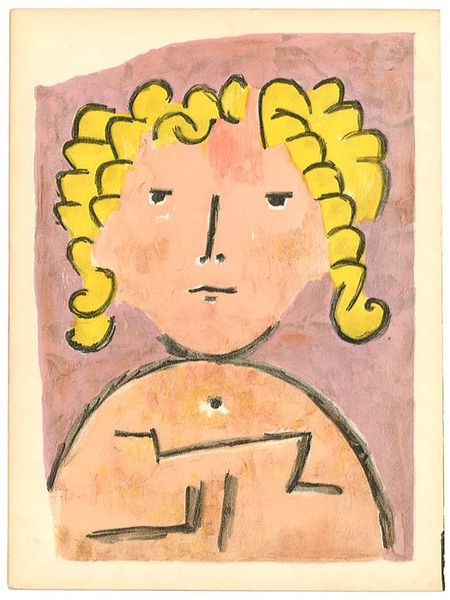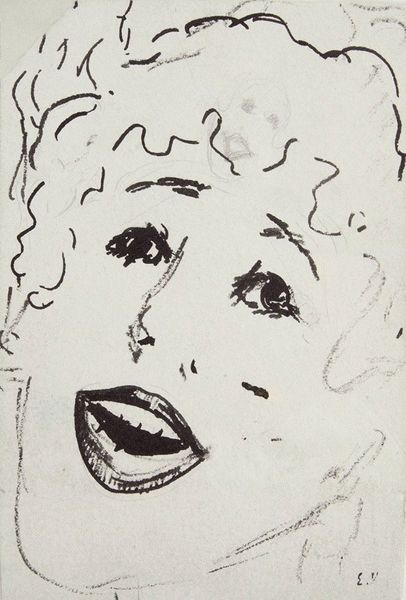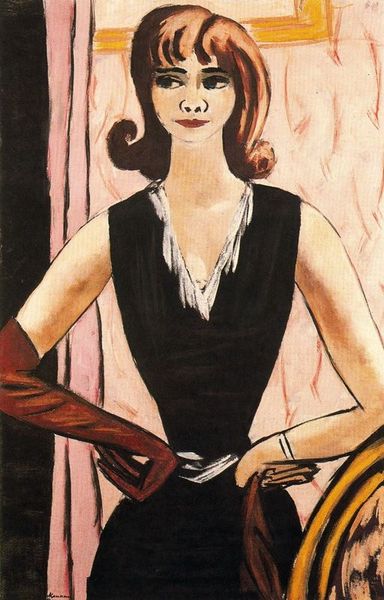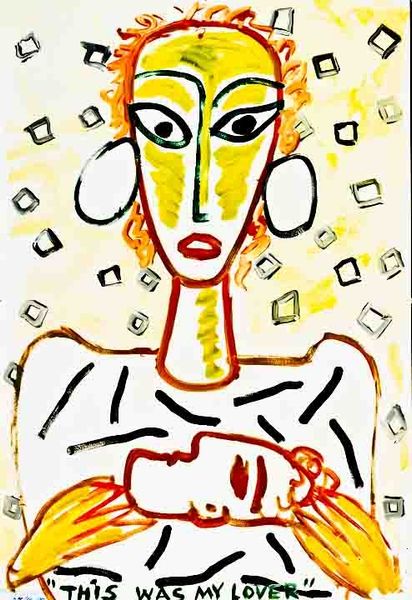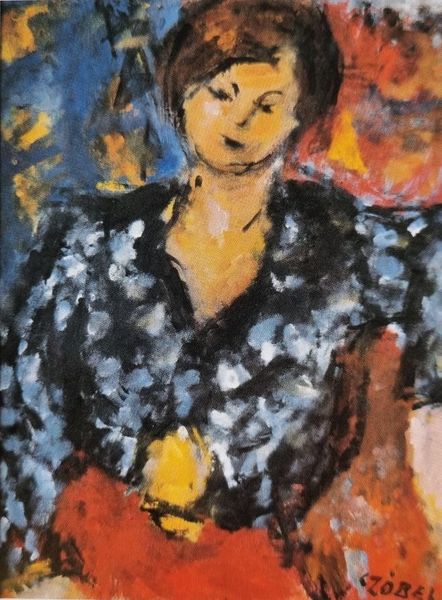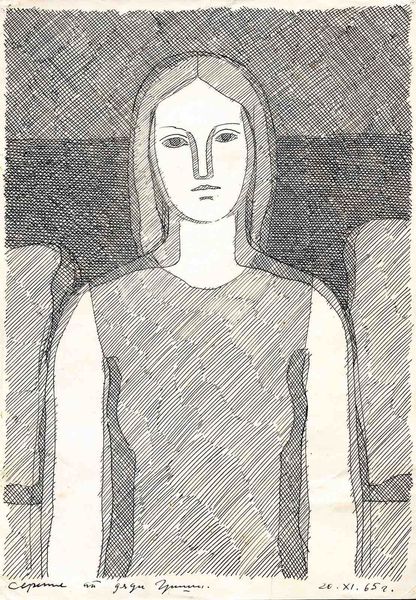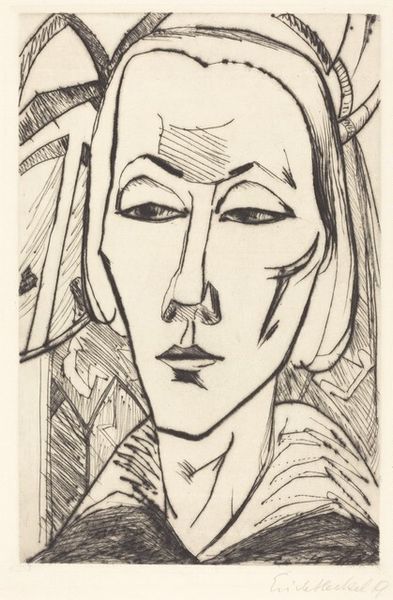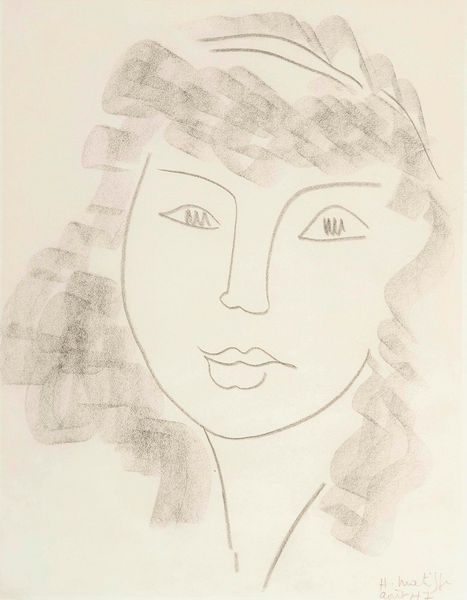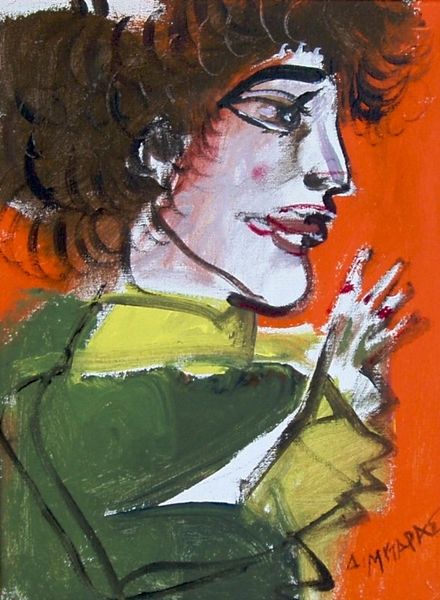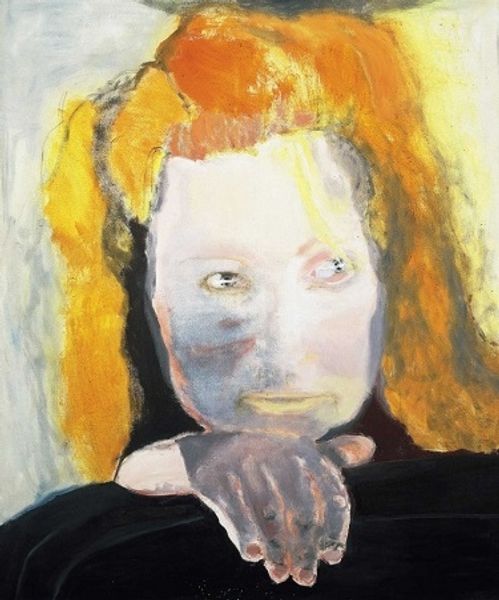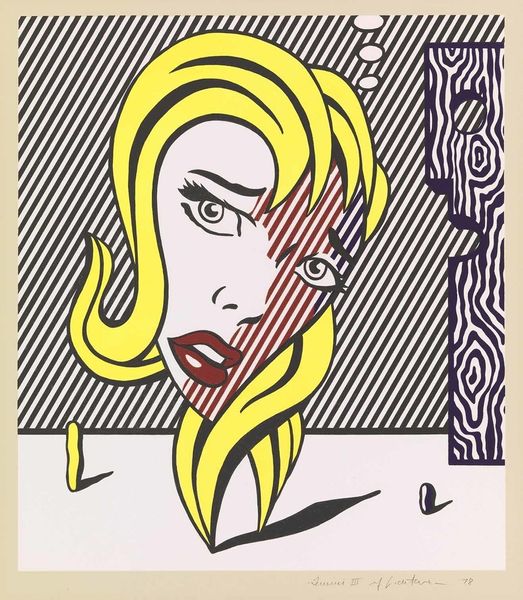
Copyright: Henri Matisse,Fair Use
Curator: Ochre Head, Lozenge Background, painted by Henri Matisse in 1942. An oil-on-canvas portrait with striking simplicity. Editor: My first impression is that there's a kind of contained vibrancy in this portrait. Despite the stark lines, that warm ochre and the geometric backdrop almost feel…restrained? Curator: It's a powerful interplay. The visible brushstrokes in the background, the layering of the oil paint…these speak to the handmade process, contrasting the relative flatness of the figure, collapsing depth. The industrial versus the organic, if you will. How was painting perceived, made, and distributed during wartime? Editor: Right, and within that, the framing! We are clearly meant to be confronted by this white femininity as caged, almost barricaded by the darkness of the backdrop. It prompts questions about female visibility and the societal structures designed to keep them in check. The war made conditions even harsher for women. Was it a mirror into the lives they had to live, restricted to households under strict patriarchal laws? Curator: Exactly. And note how he minimizes details? The lozenge pattern repeats itself within the details, simplifying form while simultaneously emphasizing craft through his expressive brushwork. Mass production’s increasing role in wartime meant people started relating differently to items, wanting something that was real. What stories does the materiality tell us about how these works operated within shifting economic spheres and gender roles? Editor: I completely agree. The minimal lines evoke the fragility and alienation felt. It seems deliberate - the woman isn't fully present but abstracted by line and geometrical, making this almost a ghostly portrayal. It could show female autonomy curtailed under duress and gender constructs of the era. Did those imposed boundaries affect artistic representation? Curator: The intentional mark-making, the rawness of the background, challenges conventional ideas surrounding 'fine art,' particularly at a moment defined by so much political propaganda. It’s about elevating craft, bringing attention to the constructed nature of images. It highlights that an artwork can be imbued with just as much artistic expression without trying to replicate the realistic or be polished. Editor: A powerful statement considering what was expected from female presentation. Thank you, seeing that in these layers lets the political charge burst forth! Curator: And for me, exploring those layers shows us how something of deceptive simplicity carries so much weight. Editor: Absolutely. A quiet resistance, perhaps, immortalized on canvas.
Comments
No comments
Be the first to comment and join the conversation on the ultimate creative platform.
